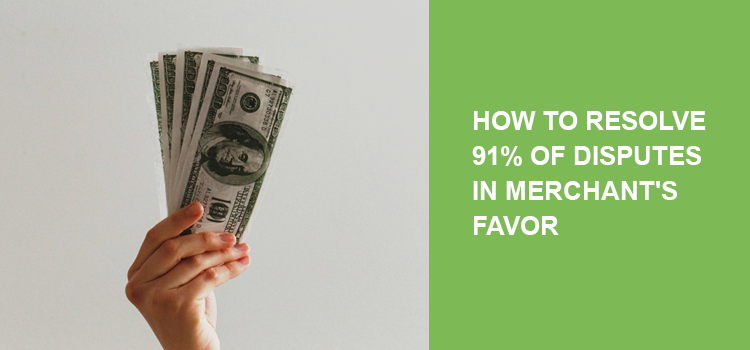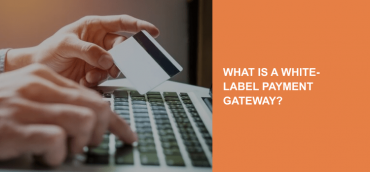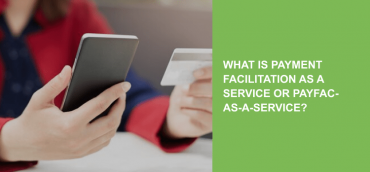Initially created as a protection mechanism for a buyer, today disputes or chargebacks are a great threat to the business. They happen more often than one would hope for and hurt the merchant’s credit history, credibility, and customer loyalty. And sadly, merchants don’t know how to win chargeback disputes.
The truth is some chargebacks are uncalled for. A simple refund would do.
For instance, 4% of chargebacks happen because the product didn’t meet the customer’s expectations. Another 4% occur because the item didn’t match the description on the website.
Yet, some are absolutely fair. Thus, 30% of chargebacks happen after the purchase with a stolen credit card, 26% because the purchased item never actually arrived, and around 15% take place when the wrong item was sent.
A high chargeback ratio results in serious consequences for merchants. And in this article, we’ll explain what a chargeback process looks like and how we can help merchants get most of these disputes resolved in their favor.
[inlinelink]
Chargeback process: Behind the scenes
Who?
A chargeback, or a payment reversal, takes place after a customer contacts his credit card company requesting his money back for a product he isn’t satisfied with / never received / didn’t actually purchase. And even though it looks like only two parties are involved here – the customer and the seller – in reality, there are five main players behind this procedure.
We’ve already met a customer, a seller, and a credit card company managing the whole process. But there are another two behind the scenes. The Acquirer and the Issuer. The first receives transactions on the seller’s behalf, while the latter issues the card with which purchase is made.
When?
As soon as a customer files for a chargeback with his credit card company, a merchant receives a notification from an Acquirer. He is then obliged to provide the basic transaction information to confirm or disprove a fraudulent transaction.
And then what happens?
In case there is a third-party payment provider involved in the process, the flow slightly changes. A PSP (payment service provider) sends the documents to an acquiring bank which, in its turn, passes them on to the issuing bank. Next, a cardholder either admits that the goods or services he paid for were delivered, or the dispute continues. In case of a continuing dispute, the issuing bank informs the acquirer why the documents they sent are insufficient or irrelevant. The acquirer sends them to a PSP which, in its turn, passes them on to the merchant. At this point, a merchant has to make a decision on whether to continue the dispute or to return the money. Then, the dispute is processed by Visa or MasterCard. They have to make a decision based on all the documentation they received from the merchant and the response of the issuing bank. At this stage, the losing side will cover the 500 USD arbitration fee.
How can merchants multiply chances for winning disputes?
Any merchant can increase his chances to win chargeback disputes with state-of-the-art prevention technologies, either third-party owned or developed in-house.
Thus, our company uses the services of the Ethoca company. This allows us not only to resolve up to 91% of all disputes in the merchant’s favor but also to keep merchant’s payment history clean.
How it works
Ethoca has a wide variety of banks in its network, and there is an agreement with each of these banks according to which Ethoca receives a notification as soon as a cardholder contacts his bank to request a chargeback.
As soon as this notification comes in, Ethoca sends an alert to the payment provider with all the details on the transaction for which a chargeback was requested. From that moment, a payment provider and a merchant have 24 hours to send a client a refund and confirm the transaction to Ethoca. Next, Ethoca informs the issuing bank that the merchant sent the client a refund. This way, the issuer doesn’t add information on the chargeback to the payment system keeping the merchant’s payment history clean. Besides, a merchant doesn’t have to cover the chargeback fee.
Other chargeback prevention systems
We know at least 15 cutting-edge fraud and chargeback prevention systems that can help both merchants and payment providers avoid chargebacks as well as successfully resolve disputes in their favor.
Among them are:
- Experian;
- Fidelity;
- LexisNexis;
- SiftScience;
- Ethoca;
- Verifi;
- Ikajo Charge Advisor;
- MaxMind;
- Riskified.
- Kount;
- Signifyd;
- Chargebacks911;
- Fraud.net;
- FraudlabsPRO;
- Chargeback defense.
You can read more about each one of them in our comparison guide here to gain a better understanding of the issue. They all cover basically the same needs of a merchant with a bunch of perks and special add-ons. So, take a look to figure out what your business needs at the moment.
Conclusion
Thanks to a combination of different chargeback prevention software, Ikajo managed to achieve a fascinating 91% of all chargebacks resolved in the merchant’s favor. If you’re struggling with a growing percentage of fraud and chargebacks on your account, we’re here to help. Once you become our customer, all of the software protecting our transaction will do the same fabulous job for you as well! Sounds interesting? Drop a line today – and get started right away!





